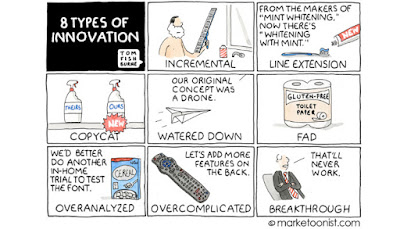I’ve been thinking a lot about medical education
lately, for two unrelated reasons. The
first is the kerfuffle between US News and World Report and some of the
nation’s top – or, at least, best known – medical schools over the USN&WR
medical school rankings. The second is
an announcement
by the University of Texas at Austin that it is planning to offer an online
Masters program in Artificial Intelligence.

Credit: AAMC
As the old mathematician
joke goes, the connection is obvious, right? OK, it may need a little explaining.
USN&WR
has made an industry out of its rankings, including for colleges, hospitals, business
schools, and, of course, medical schools. The rankings have never been without controversy,
as the organizations being ranked don’t always agree with the methodology, and
some worry that their competitors may
fudge the data. Last year it was law
schools protesting; this year it is medical schools.
…the principled belief that rankings cannot meaningfully reflect the high aspirations for educational excellence, graduate preparedness, and compassionate and equitable patient care that we strive to foster in our medical education programs…Ultimately, the suitability of any particular medical school for any given student is too complex, nuanced, and individualized to be served by a rigid ranked list, no matter the methodology.
Several other leading medical
schools have now also
announced their withdrawals, including Columbia, Mt. Sinai, Stanford, and
the University of Pennsylvania.
Now, I am no expert on
the methodology and don’t have any particular love towards USN&WR, but
I do find rankings to be informative. As
the USN&WR CEO said
in response to the HMS withdrawal: “Our mission is to help prospective students make the best decisions for
their educational future…we believe students deserve access to all the data and
information necessary to make the right decision.” I mean, who could argue that?
Evidently the medical
schools. I’ve seen lots of reasons cited
for their withdrawals, but what I have not seen are suggestions for
alternatives – how to make the rankings better, how to more accurately gauge “quality”
of medical schools, how to fairly compare different medical schools. I guess if you are Harvard or Stanford you
believe your superiority is obvious.
I’ve brought this up on
Twitter and gotten some interesting responses, especially from physicians –
e.g., that medical school attended isn’t an indication of how good or bad a
doctor will be, and that medical school actually doesn’t matter as much as where
doctors do their residency. Those may be very valid arguments, but they leave
me to conclude that we not only don’t know which medical schools are the “best,”
we don’t even know if medical school has any real bearing on the quality/competence
of the physicians it produces (not that we can measure that either).
As with most things in healthcare, quality is too
complex for the professionals to figure out, so they’ll punt to the patients to
figure it out for themselves.
I’ve written before about how, in 2023, it makes no
sense that we have parallel educational
tracks for M.D.s and D.O.s, or, indeed, that our medical education system
takes such a narrow
and outdated view towards “health.” Medical
schools and graduate medical education programs have become an end unto
themselves, and it’s no surprise that training physicians in the U.S. is a longer
and more expensive process than anywhere in the world – not that we can show we
have better physicians or those physicians achieve better outcomes as a result,
of course.
We should be fundamentally rethinking how we train
physicians, which brings me to the UT AI program.
 |
| Credit: UT News |
The UT announcement brags that its Master of Science in
Artificial Intelligence (MSAI) “will be the first large-scale degree program of
its kind and the only master’s degree program in AI from a top-ranked
institution to be priced close to $10,000.”
That is considerably cheaper than an in-person program.
The program will not require an undergraduate degree
in computer science but candidates will need some technical expertise. Professor Adam Klivans, director of the new
program, told
The New York Times the degree was “something working professionals can participate in to learn
the expertise their companies need without leaving their jobs.”
He further says:
The fields of artificial intelligence and machine learning have seen unprecedented growth over the last 10 years. Our goal is to ensure that every qualified student can access a premier education in AI, one that is keeping pace with this rapidly evolving field. With the MSAI program, we have removed geographic barriers entirely and significantly lowered the cost barrier of graduate study. For our students, this a game changer.
Eric Busch, director of the Computer and Data Science
Online program, added: “It’s not just an ‘online degree.’ It’s an immersive and
connected community of learners and a credential from UT Austin that opens
doors.”
Healthcare does have many online programs,
but not, as far as I can tell, for medical school. Medical schools are starting to use virtual reality,
but only as a training tool, not as a replacement for in-person classes. They’re tip-toeing when they should be taking
great leaps.
Where are the medical schools that are seeking, to
paraphrase Professor Klivans, to ensure that every qualified student can access
a premier medical education, one that is keeping pace with that rapidly evolving
field, to remove geographic barriers and to significantly reduce the cost
barrier of medical education?
 |
| The future of MedEd? Credit: Medicine at Michigan |
Welcome to MedEd in an AI Era.













